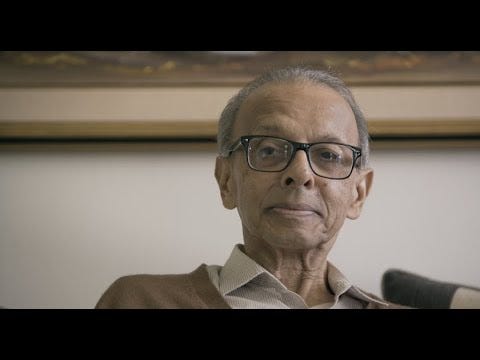Read that carefully again.
There's a mountain of difference between being stupid and looking stupid.
And that's the focus of a great article in Hacker News.
If you're willing to ask 'dumb' questions that look obvious to a lot of people, you end up learning things they don't.
Here's an example. At a discussion on disposal of nuclear waste, everyone was focused on the harmful effects it had on the environment and people. Until someone piped up and asked "What's good about nuclear waste?'
On the face of it, a stupid question. But it opened the doors for thinking in a different direction on treating the material.
When it comes to losing at a video game, he gives the example of people blaming everything from screen lag, to teammates, to glitches. And he goes on to say how he improved at the game by examining where he went wrong, instead of making excuses.
There is a huge incentive not to 'look' stupid. Right from asking questions in class to questions at work that may seem stupid on the face of it but is valid when people stop to think about it.
The number of processes that large organisations follow is set in stone - good luck with changing that because no one wants to ask the questions that will expose shortcomings.
In any case, the most likely answer people get if they ask questions? That's the way we've always done things around here.
People hate looking stupid. And they'll do just about anything to avoid it.
Photo by Artem Maltsev on Unsplash
A step to solve supply chain paralysis
Mainstream media is full of stories on how shipping has been disrupted around the world.
Everything is taking longer and the slippages in the chain are cascading in unpredictable ways.
Ryan Peterson is the CEO of Flexport, a logistics platform, and in the thick of trying to find a solution to cascading and knotty problems
He took a three-hour tour of the port in Long Beach to see firsthand what the problems on the ground were.
There was practically no unloading going on because of no vacant spaces available for containers to be unloaded and transported.
He identified the point at which the jam could be cleared.
The zoning at the port allows only 2 containers to be stacked at a time. He suggested that this be increased to 6 for the next 120 days. This increases the space availability by 300% right away.
He also suggested that the government create a temporary yard over a 500 acre area within a 100 kms of the inland port.
Smaller container ships and barges can be unloaded there, rather than add to the congestion at the main port.
The great part of these suggestions is that it is applicable to any port, anywhere in the world.
And if they are temporary requirements, getting government approval for processes can be achieved much faster.
He even offered to lead the effort for federal or state governments, if asked.
A Twitter thread casts light on the supply chain issue than all the handwringing and assumptions I've read so far.
Now, let's see if this spurs people into action.
Egos drive greater change than motivation does
The year? 1983.
India won the world cup for the first time and created a flutter in a sport dominated by England and Australia.
That was a time when Indian journalists were not permitted to enter MCC.
And even when India won the world cup, the top officials at BCCI found they could not procure the tickets they required.
The egos of all the top office bearers of BCCI were bruised and they decided that India should host the next world cup.
They faced resistance when the English establishment said that the sub-continent did not even have the required number of stadia to hold matches.
Another point of resistance? The number of overs had to be reduced from 60 to 50 because of the smaller daylight hours in India as compared to English summers.
Prudential refused to budge until Jagmohan Dalmiya doubled the money that would be paid out for holding the tournament in India, which dissolved all resistance.
India and Pakistan pooled their venues to jointly host the World Cup in 1987.
The fancied teams did not make it to the finals
Even then, a capacity 90,000 crowd at Eden Gardens turned up to watch the face off between England and Australia. That firmly established us as the cricket-crazy nation and marked the beginning of the English reluctantly ceding authority and control.
It was the egos that drove change, more than the lofty goal of making India the fulcrum of international cricket.
Even if it was the players who wrote history and brought home the world cup in 1983.
Every week, I'll plant a few ideas in your mind on branding, behavior and markets. Triggers for your thoughts. Spread the word to your friends. All you have to do is click the link and enter an email address.













Share this post